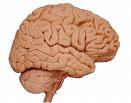Raffini, J. P. (1996). 150 ways to increase intrinsic motivation in the classroom. Boston: Allyn and Bacon.
 While this book is written for teachers at the elementary or secondary level, there are some important aspects of the book that make it fit into the adult learning environment as well. As Raffini says,
While this book is written for teachers at the elementary or secondary level, there are some important aspects of the book that make it fit into the adult learning environment as well. As Raffini says,
The desire to seek and to conquer challenges is at the core of intrinsic motivation in the classroom. It is fueled by students’ psychoacademic needs to control their own decisions (autonomy); to do things that help them feel successful (competence); to feel part of something larger than themselves (belonging and relatedness); to feel good about who they are (self-esteem); and to find pleasure in what they do (involvement and stimulation) (Raffini, 1996, p. 3).
These same needs are found in the adult classroom. The five remaining chapters in the book each cover one of the above described needs. Each chapter begins with recommendations for enhancing that need in the classroom and then describes 20 strategies that will incorporate the development of the need with variations given for many of them. Many of the strategies will say for “adapted to all grade levels and content areas,” which can definitely include the adult learning situation. From establishing goals in Autonomy to expanding a model in Involvement and Stimulation, this book has a strategy to make learning interactive and fun for students of all grade levels.
Read Full Post »
 According to his book’s third chapter, “You have much, much more to do with how your students turn out than you may have thought” (Jensen, 2005, p. 33–italics in original text). While there are both external and internal factors that affect learning, some of the most important factors, according to Jensen, are more a function of the brain’s design than the learning environment.
According to his book’s third chapter, “You have much, much more to do with how your students turn out than you may have thought” (Jensen, 2005, p. 33–italics in original text). While there are both external and internal factors that affect learning, some of the most important factors, according to Jensen, are more a function of the brain’s design than the learning environment. The premise of Vygotsky’s theory is that nurturing a child, especially in his social and cultural environments, promotes cognitive development. The central ideas and concepts of this theory include:
The premise of Vygotsky’s theory is that nurturing a child, especially in his social and cultural environments, promotes cognitive development. The central ideas and concepts of this theory include: While this book is written for teachers at the elementary or secondary level, there are some important aspects of the book that make it fit into the adult learning environment as well. As Raffini says,
While this book is written for teachers at the elementary or secondary level, there are some important aspects of the book that make it fit into the adult learning environment as well. As Raffini says,